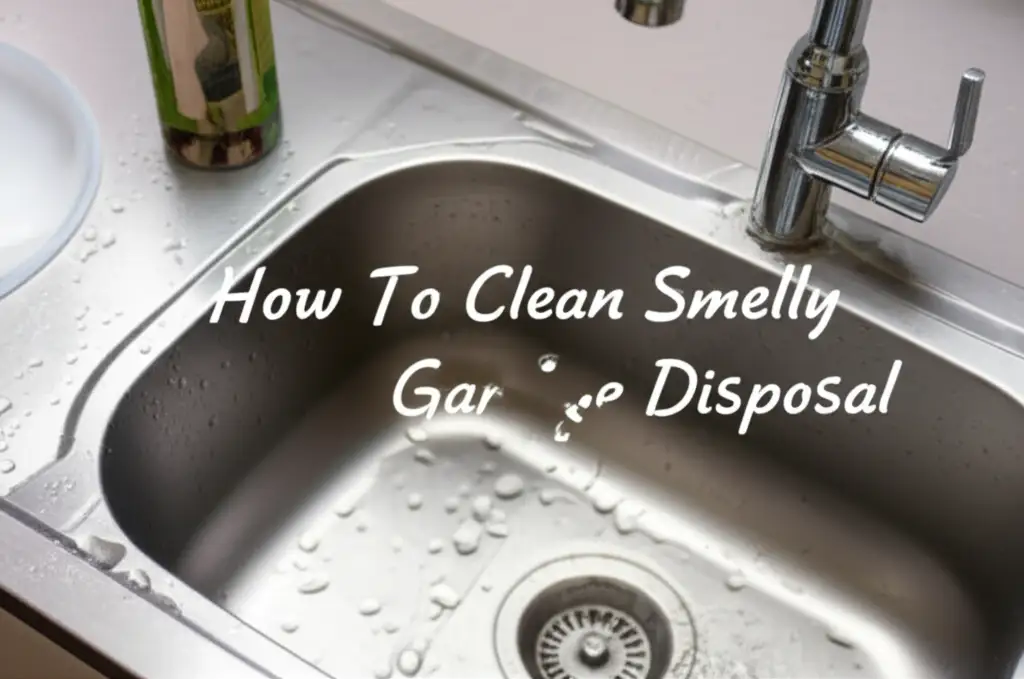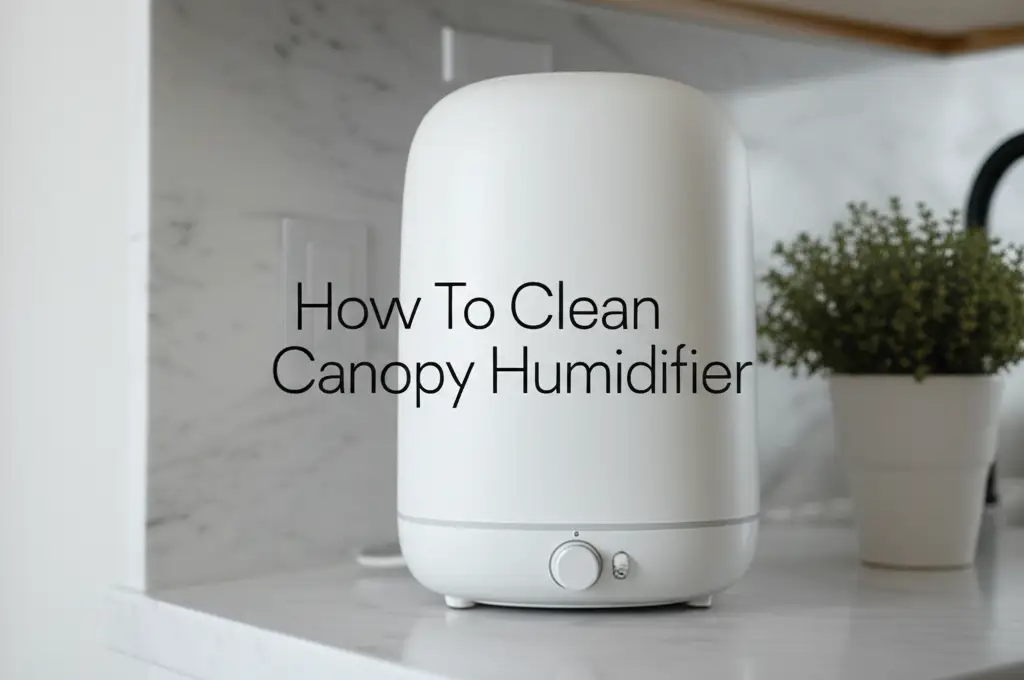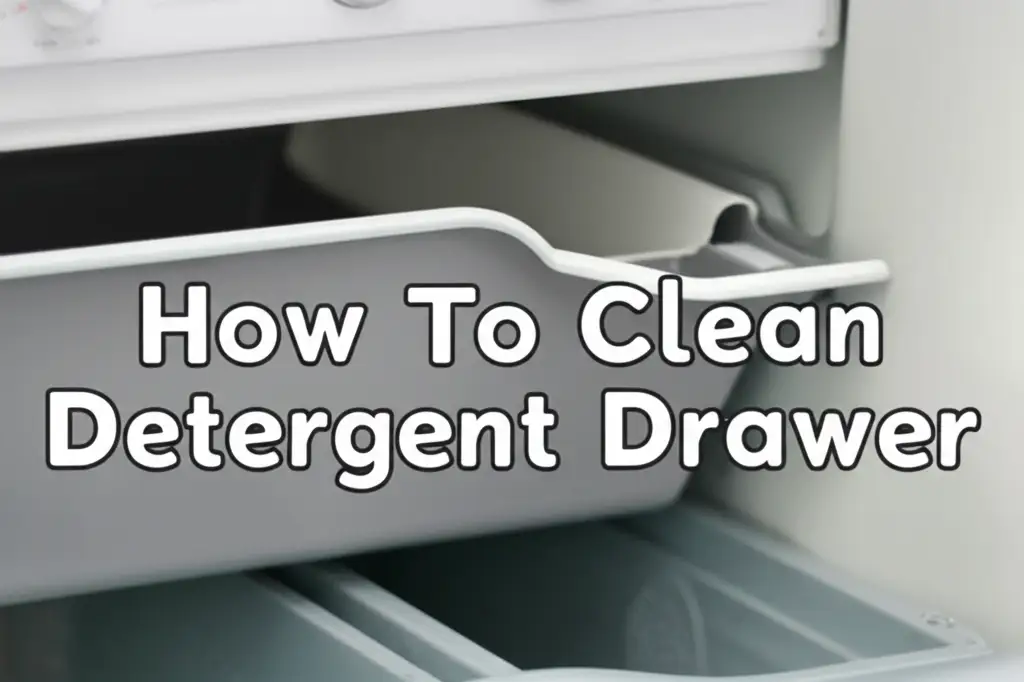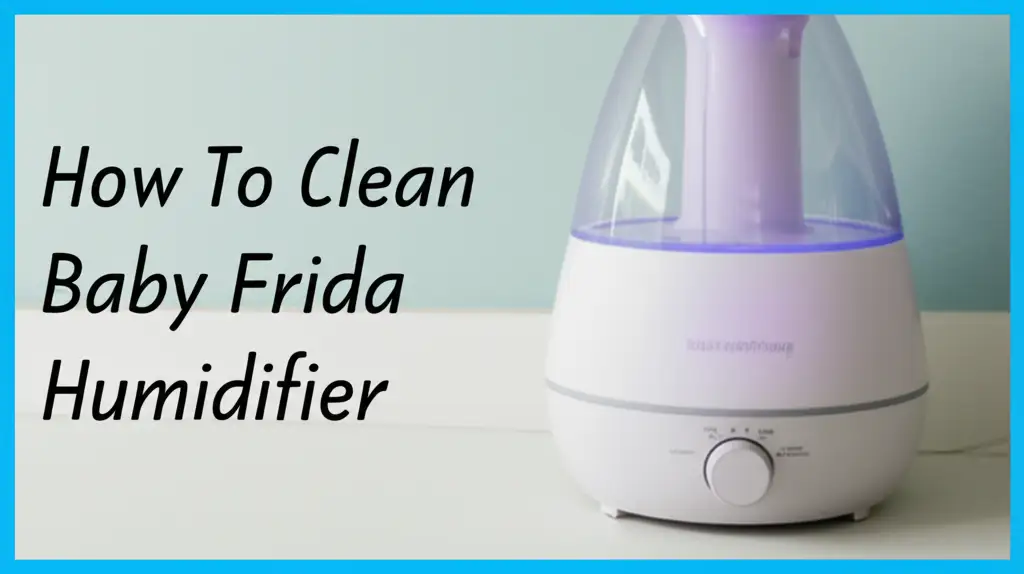· Home Cleaning · 20 min read
How To Clean Smelly Garbage Disposal

Banish Bad Odors: How To Clean Smelly Garbage Disposal Effectively
Few things disrupt a clean kitchen’s calm like a persistent, unpleasant smell. If that funk seems to waft from your sink, chances are your garbage disposal is the culprit. Bits of food, grease, and grime cling to its internal parts, creating a breeding ground for bacteria and the nasty odors that follow. I have faced this problem myself many times. It is a common household issue. Fortunately, cleaning a smelly garbage disposal is simpler than you might think. You do not need harsh chemicals.
This guide will help you eliminate those stubborn smells. We will explore effective methods using common household items. We will also cover preventative measures. You will learn the specific steps for a truly deep clean. You will find ways to keep your kitchen smelling fresh. This article teaches you how to clean your garbage disposal thoroughly. It helps you maintain a hygienic kitchen environment. Let’s get rid of those odors for good.
Takeaway
- Identify the common causes of a smelly garbage disposal.
- Gather simple, effective cleaning tools and ingredients.
- Use natural methods like ice, salt, lemons, baking soda, and vinegar for a deep clean.
- Perform routine maintenance to prevent future odors.
- Know when professional help is necessary.
A smelly garbage disposal results from food particles accumulating inside the unit’s grinding chamber and splash guard. These particles rot, leading to bacterial growth and foul odors. Cleaning requires breaking down and flushing out this organic material. Common methods include using ice, salt, citrus peels, baking soda, and vinegar to scour, deodorize, and sanitize the disposal.
Uncovering the Culprit: Why Your Garbage Disposal Smells
A foul odor coming from your kitchen sink signals a problem with your garbage disposal. This smell is not random. It always has a cause. Food particles are the main reason. Small bits of food get stuck inside the disposal. They cling to the grinding components. They stick to the rubber splash guard. Over time, these trapped food pieces begin to rot. This decomposition process produces the strong, unpleasant smells you notice.
Grease and oil also contribute to the problem. People often pour grease down the drain. This grease solidifies as it cools. It coats the interior surfaces of the disposal. Food particles then easily stick to this greasy layer. This creates a thicker buildup. The grease also traps moisture. This damp environment is perfect for bacteria and mold to grow. Mold can also grow in damp, dark places. If you find mold in other areas, such as how to clean mold under sink, you know it causes bad smells. These microorganisms produce their own odors. They add to the general stench.
The splash guard, a black rubber ring at the drain opening, is a frequent offender. This guard has flaps. These flaps prevent items from flying out. They also trap food debris. People often forget to clean under this guard. Food particles get lodged there. They decay. This causes a lingering odor. Sometimes, a clogged drain line also contributes. If the drain is slow, water and food waste sit in the pipes longer. This gives more time for decomposition. Understanding these causes helps you choose the right cleaning method. It also guides your prevention efforts. Knowing why it smells helps you fix it completely.
Essential Tools and Ingredients for a Deep Clean
Before you start cleaning your smelly garbage disposal, gather all necessary items. Having everything ready saves time. It makes the cleaning process smooth. You likely have most of these items in your kitchen or pantry already. This makes the job convenient and cost-effective. You will need a few simple tools and some basic cleaning agents.
First, consider safety. Always unplug the garbage disposal unit before you put your hand anywhere near the drain opening. This prevents accidental activation. It keeps you safe from serious injury. You might also want to wear rubber gloves. This protects your hands from grime. It also shields them from cleaning solutions. A small brush or old toothbrush is helpful. It lets you scrub under the splash guard. It reaches small crevices.
For cleaning ingredients, you have several effective options. Ice cubes are crucial. They help dislodge stubborn food particles. They also sharpen the grinding blades. Coarse salt, like rock salt or sea salt, works with the ice. It adds abrasive power. Baking soda is a natural deodorizer. It neutralizes odors. It also helps scrub away grime. White vinegar is a powerful disinfectant. It breaks down grease. It kills bacteria. You can use it alone or with baking soda. Citrus peels, such as lemon, lime, or orange, provide a fresh scent. They also have oils that help clean. How to clean garbage disposal with lemon is a popular, effective method. Dish soap is also useful. It helps cut through grease. You may also want a small flashlight. This lets you inspect the inside of the disposal. It helps you see any leftover debris.
Having these items ready makes the task easier. You will clean your disposal effectively. You will also maintain a fresh-smelling kitchen. Prepare your tools and ingredients. Then, you can tackle that stubborn smell.
The Power of Natural Cleaning: Lemon and Ice
Natural methods are often the best for cleaning a smelly garbage disposal. They are safe for your pipes. They are gentle on the environment. Plus, they leave your kitchen smelling naturally fresh. Two of the most effective natural cleaners are ice and citrus peels, especially lemons. These common household items work wonders. They tackle both physical debris and unpleasant odors.
Start with ice cubes. Fill your disposal about three-quarters full with ice. You can add a cup of coarse salt to the ice. The salt boosts the abrasive action. Turn on cold water. Then, turn on the disposal. The ice and salt will grind together. This creates a scouring effect. They scrape off food particles and grime. These particles stick to the grinding components. The ice also helps sharpen the blades. It knocks loose any stuck-on debris. This process sounds simple. However, it is surprisingly effective at physically cleaning the unit. The noise will be loud. Let the disposal run until all the ice is gone. Flush with cold water for a few seconds.
Next, introduce citrus peels. Lemons are perfect. Their strong, fresh scent immediately tackles bad odors. The natural oils in the peels also help break down grease. They loosen up any remaining grime. After the ice treatment, drop a few lemon, lime, or orange peels into the disposal. Make sure the pieces are small enough to grind easily. Turn on cold water. Then, turn on the disposal again. Let it run until all the peels are gone. The disposal will smell much better. This step not only cleans but also deodorizes. Many people find this method a quick fix for daily freshness. You can even use it regularly. This helps maintain a pleasant scent. It prevents odor buildup. This simple combination of ice and citrus offers a powerful, natural solution. It keeps your garbage disposal clean and fresh.
Baking Soda and Vinegar: A Dynamic Duo for Odor Removal
When it comes to tackling stubborn odors and grime in your garbage disposal, baking soda and vinegar are an unbeatable team. This combination creates a powerful fizzy reaction. It breaks down food particles. It neutralizes odors. It also kills bacteria. It is a highly effective, natural cleaning method. I always keep these two ingredients on hand.
First, use baking soda. Measure out half a cup of baking soda. Pour it directly into your garbage disposal drain. Make sure it goes down into the unit. Let the baking soda sit for at least 30 minutes. You can leave it for an hour if the smell is very strong. Baking soda is a natural absorbent. It absorbs and neutralizes bad smells. It also helps loosen up any caked-on grime. While the baking soda sits, it works on breaking down the organic matter. This prepares the disposal for the next step.
After the waiting period, pour one cup of white vinegar down the drain. You will immediately hear a fizzing sound. This is the chemical reaction between the baking soda and vinegar. The fizzing action helps scrub the inside of the disposal. It reaches all the nooks and crannies. This reaction creates foam. The foam lifts away debris. It also kills odor-causing bacteria. Let this mixture sit for another 10 to 15 minutes. The longer it sits, the more effectively it works. The acidity of the vinegar breaks down grease and grime. It also acts as a disinfectant. This process is similar to how how to clean dishwasher with vinegar works, using vinegar’s powerful cleaning properties.
Finally, flush the disposal with hot water. Turn on the hot water tap. Let it run for about a minute. The hot water helps rinse away all the loosened particles. It also flushes the baking soda and vinegar mixture. Turn on the disposal for a few seconds as the hot water runs. This ensures everything is thoroughly washed away. This baking soda and vinegar treatment is perfect for a deep clean. It leaves your disposal smelling fresh. It removes the source of the odors. This method is safe. It is effective. It is also environmentally friendly. You will notice a big difference. Many find how to clean disposal with baking soda incredibly effective for stubborn odors.
Heavy-Duty Cleaning: Addressing Persistent Odors
Sometimes, natural methods are not enough for a really stubborn smell. This happens when severe buildup occurs. It might be due to long-term neglect. Or, it could be a particularly greasy clog. In these cases, you might need a more heavy-duty approach. This involves using stronger cleaning agents like bleach or borax. However, these require caution. You must use them correctly and sparingly. They can damage your plumbing if misused.
Using Bleach (Use with Extreme Caution): Bleach is a powerful disinfectant. It kills bacteria and mold. It can effectively eliminate odors at their source. However, you must use bleach carefully. Never mix bleach with other cleaners, especially ammonia or vinegar. This creates toxic fumes. This is very dangerous. To use bleach, first run cold water down the disposal for a few seconds. Then, pour about half a cup of liquid bleach into the drain. Do not turn on the disposal. Let the bleach sit for about 30 minutes. This gives it time to work on the grime and bacteria. After 30 minutes, flush the disposal thoroughly with cold water. Run the water for several minutes. Make sure to rinse away all traces of bleach. Turn on the disposal briefly while flushing to ensure everything clears. Bleach can be corrosive. Use it only when other methods fail. Use it infrequently.
Using Borax (A Safer Alternative to Bleach): Borax is a natural mineral. It is a multi-purpose cleaner and deodorizer. It is safer than bleach for your plumbing and the environment. Borax acts as a mild abrasive. It also neutralizes odors. To use borax, pour half a cup of borax down the drain. Let it sit overnight if possible. This gives it plenty of time to break down grime and absorb odors. The longer it sits, the better it works. In the morning, flush the disposal with hot water. Turn on the disposal for a minute while flushing. This helps clear everything out. Borax is effective for ongoing odor prevention. It is also good for a periodic deep clean. It is generally safe for septic systems too. This makes it a preferred choice for many homeowners seeking a stronger solution without the risks of bleach.
Always prioritize natural methods first. Only resort to bleach or borax if absolutely necessary. Read product labels carefully. Follow all safety warnings. Proper ventilation is also important when using stronger chemicals. You will address stubborn smells effectively. You will also protect yourself and your plumbing.
Preventative Measures: Keeping Your Disposal Fresh Daily
Cleaning a smelly garbage disposal is important. However, preventing odors in the first place is even better. Implementing a few simple habits can keep your unit fresh. These daily practices save you time and effort. They extend the life of your disposal. Consistent care is key. I have found that a little effort each day prevents big problems later.
First, always use plenty of cold water when running your disposal. Cold water helps solidify grease and oils. This prevents them from coating the pipes. The solidified grease and food particles are then easier to grind and flush away. Running water before, during, and after grinding is crucial. Keep the water running for about 30 seconds after the grinding sound stops. This ensures all particles are completely flushed down the drain and out of the unit. Without enough water, food can sit inside. This leads to odors.
Second, be mindful of what you put down your disposal. Avoid fibrous foods. These include celery, corn husks, onion skins, and banana peels. These items can wrap around the blades. This causes clogs. It also leaves behind residue. Also, avoid starchy foods like potato peels and pasta. They can create a paste-like substance. This sticks to the internal components. Never pour grease, oil, or fat down the drain. These substances congeal. They coat pipes. They trap food. This creates major clogs and odors. You might even face issues similar to when you need to how to clean outside garbage can due to accumulated waste.
Third, regularly clean your splash guard. The black rubber guard often accumulates food debris. Peel it back. Use a small brush or a paper towel to wipe underneath it. You will be surprised what you find there. Do this every few days. This simple step stops many odors before they start. Fourth, use natural fresheners regularly. Drop a few citrus peels down the disposal every week. Run them with cold water. The fresh scent will linger. It also helps clean. You can also grind a few ice cubes periodically. This helps scour the blades. It knocks off buildup. By adopting these preventative measures, you maintain a clean and odor-free garbage disposal. Your kitchen will smell fresh always.
Troubleshooting Common Garbage Disposal Issues Beyond Odors
A smelly garbage disposal is a common issue. Sometimes, the problem goes beyond just bad smells. You might encounter other performance issues. These issues often relate to blockages. They can also point to electrical problems. Knowing how to troubleshoot these common issues helps you react properly. It can save you from calling a professional. I have faced these challenges myself. Here are some solutions.
Clogs and Jams: A common issue is a jam. This happens when a hard object or too much fibrous food gets stuck. The disposal will hum but not grind. First, turn off the power to the disposal. Look for a red reset button on the bottom of the unit. Press it. If it still hums, use an Allen wrench. Insert the wrench into the center hole at the very bottom of the disposal. Turn it back and forth. This manually rotates the grinding plates. It frees the jam. Never use your hand to clear a jam. Once the jam is clear, remove any debris. Turn the power back on. Run cold water and test the disposal. If a clog persists, it might be in the drain line itself. For these issues, a plunger can sometimes help. Or, you might need a drain snake.
Leaking Disposal: Leaks can occur for several reasons. Often, they happen around the mounting screws. These might have loosened over time. Check the seals and connections around the top of the disposal. This is where it attaches to the sink. Tighten any loose screws. If the leak is from the dishwasher hose connection, tighten that clamp. Leaks from the drainpipe connections also occur. Ensure all pipe fittings are snug. Sometimes, a crack in the disposal housing itself causes a leak. This usually means the unit needs replacement. A crack is a serious problem. You cannot repair it yourself.
Disposal Not Turning On: If your disposal does not turn on, check the power first. The most common cause is the reset button. Look under the disposal. It is usually a small red button. Press it firmly. If it pops out, it means the motor overloaded. If it still does not work, check your circuit breaker. The disposal might have tripped a breaker. Flip the breaker off and then back on. If these steps do not work, the motor might be burned out. Or, there might be an electrical fault. In these cases, it is best to call a qualified electrician or plumber. Do not try to repair electrical components yourself.
Addressing these issues promptly prevents bigger problems. Regular maintenance, as discussed earlier, helps prevent most of these troubles. Knowing how to clean your garbage disposal also includes knowing when to address other issues.
When to Call a Professional: Beyond DIY Solutions
Most garbage disposal problems, especially foul odors and minor jams, are fixable with DIY methods. However, some issues indicate a more serious problem. These problems require the expertise of a professional plumber. Knowing when to call for help saves you time, prevents further damage, and ensures your safety. Do not hesitate to contact a professional if you encounter any of these situations.
Persistent Clogs and Backups: You have tried all the DIY methods to clear a jam or clog. You used the Allen wrench. You pressed the reset button. You even tried a plunger. Yet, the water still backs up. Or, the disposal continues to hum without grinding. This suggests a stubborn blockage deeper in the plumbing. It might be beyond the disposal unit itself. A professional plumber has specialized tools. They can diagnose and clear blockages. They use drain snakes or hydro-jetting equipment. These tools are much more powerful. They reach clogs that home tools cannot.
Leaks That Won’t Stop: You noticed water leaking from your garbage disposal. You checked all the connections. You tightened the mounting screws. Still, the leak continues. This might mean the disposal housing itself is cracked. It could be a faulty seal deep inside the unit. These issues are not easily repairable by a homeowner. A plumber can identify the exact source of the leak. They can advise you. The unit might need replacement. Continuing to use a leaking disposal causes water damage. It can also lead to mold growth. Addressing how to clean mold with vinegar is one thing, but preventing it from a leak is better.
Electrical Problems or Burning Smell: You turn on your disposal, but it does not work. The reset button does not help. The circuit breaker is fine. Or, even worse, you smell burning. You see smoke coming from the unit. These are clear signs of an electrical issue. They might also indicate a motor burnout. Dealing with electricity is dangerous. Never attempt electrical repairs yourself unless you are qualified. A professional plumber or electrician can safely diagnose the electrical problem. They can replace faulty components. They can also install a new unit.
Old or Aging Unit: Your garbage disposal is very old. It consistently gives you trouble. It jams frequently. It smells often. It runs less efficiently. At some point, continued repairs are not cost-effective. An aging unit might be nearing the end of its lifespan. A plumber can assess its condition. They can recommend a replacement. Investing in a new unit often prevents recurring problems. It gives you peace of mind. A professional can help you choose the right model. They can also install it correctly. They ensure proper function.
For these complex issues, professional help is the safest and most efficient solution. Do not put off calling a plumber. They can resolve the problem effectively. They also help prevent future complications.
Frequently Asked Questions
Q1: How often should I clean my garbage disposal?
A1: You should clean your garbage disposal at least once a week for routine maintenance. For a deeper clean, do it monthly. If you use it heavily or grind a lot of food, you might need to clean it more often. Regular cleaning prevents odor buildup. It keeps the unit running smoothly. Consistency is key to an odor-free kitchen.
Q2: Can I use chemical drain cleaners in my garbage disposal?
A2: No, you should never use chemical drain cleaners in your garbage disposal. These harsh chemicals can damage the disposal’s plastic and rubber components. They can also corrode your plumbing pipes. The chemicals can create dangerous fumes when mixed with food particles. Stick to natural methods like ice, baking soda, and vinegar for safe cleaning.
Q3: What foods should I avoid putting in my garbage disposal?
A3: Avoid putting fibrous foods like celery, corn husks, and onion skins in your disposal. Do not put starchy foods like potato peels and pasta. Never dispose of coffee grounds, eggshells, or large amounts of grease and oil. These items can cause clogs or damage the unit. Scrape these into the trash instead.
Q4: Why does my garbage disposal still smell after cleaning?
A4: If your disposal still smells after cleaning, food particles might be stuck in hard-to-reach areas. Check under the splash guard for hidden debris. A deeper clean with baking soda and vinegar might be needed. Sometimes, the odor comes from the drainpipe beyond the disposal. A professional plumber might need to clear a deeper clog.
Q5: Is it safe to put ice in a garbage disposal?
A5: Yes, it is very safe and highly recommended to put ice in your garbage disposal. Ice cubes, especially with some coarse salt, help scour the grinding components. They dislodge food particles and grime. This action also helps sharpen the blades. Always use cold water when grinding ice to protect the motor.
Q6: Can I use hot water to flush my garbage disposal?
A6: Generally, cold water is best when using your garbage disposal. It helps solidify grease, making it easier to grind and flush away. However, hot water is useful for a final rinse after cleaning agents like baking soda and vinegar. It helps carry away loosened debris and disinfect the drain. Use cold water during operation and hot water for rinsing after cleaning.
Conclusion
A smelly garbage disposal is a common household nuisance, but it is one you can easily fix. By understanding the root causes of odors and applying the right cleaning techniques, you can restore freshness to your kitchen. We explored various methods, from the simple yet effective ice and lemon approach to the powerful combination of baking soda and vinegar. Remember, natural cleaning solutions are often the safest and most efficient choice for your appliance and plumbing. I hope these methods help you as much as they have helped me.
Beyond cleaning, proactive measures are vital. Always use cold water during operation. Avoid putting problematic foods and grease down the drain. Regularly clean the splash guard. These simple habits create a significant difference in preventing future odors. While most issues are DIY-friendly, know when to call a professional. Persistent clogs, non-stop leaks, or electrical problems require expert attention. Taking care of your garbage disposal is simple. It ensures a clean, fresh kitchen environment. Tackle that smell today. Enjoy a cleaner kitchen tomorrow. Your nose will thank you!
- garbage disposal cleaning
- kitchen odor removal
- appliance maintenance
- DIY cleaning tips
- odor-free kitchen




